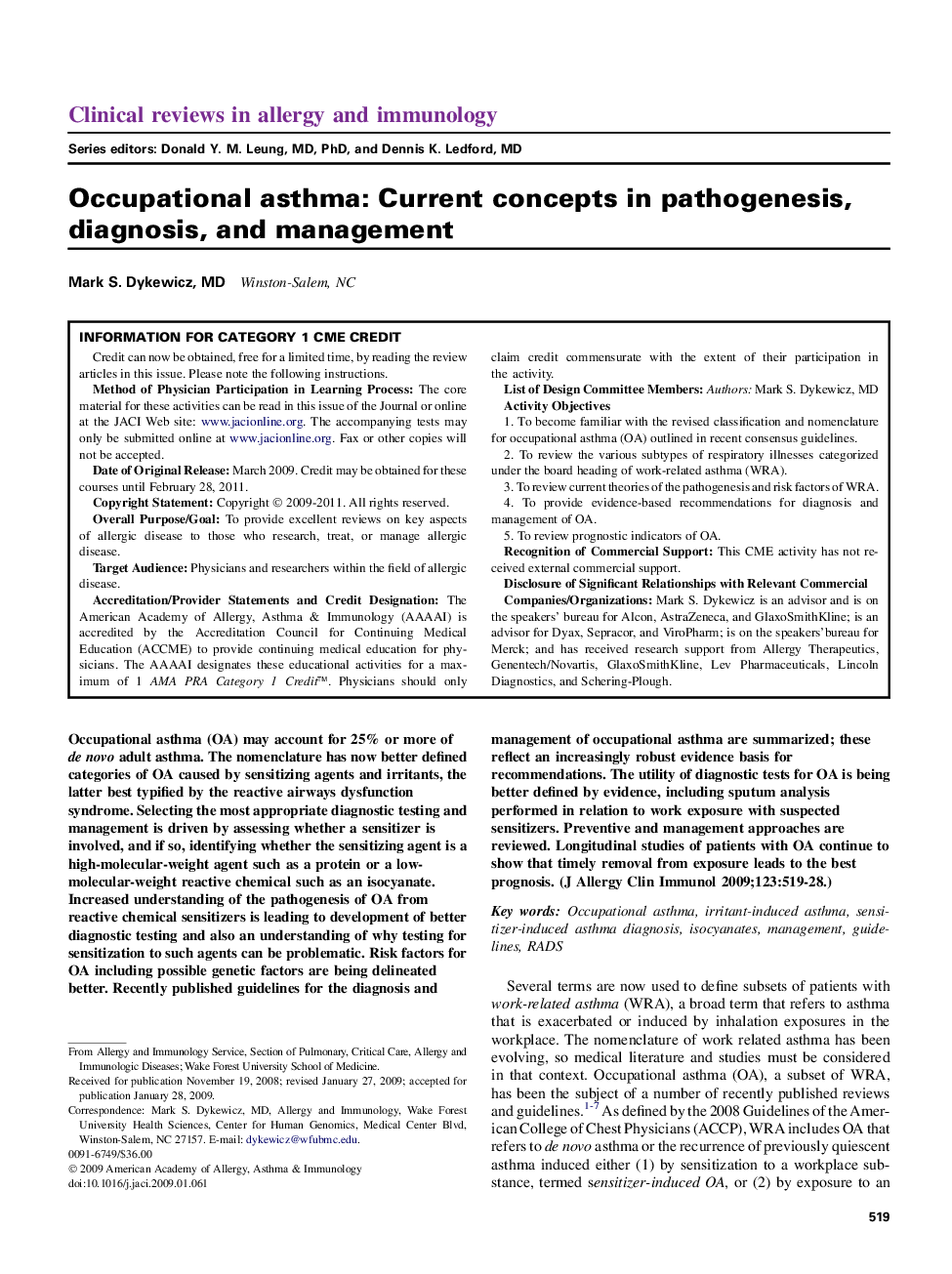| Article ID | Journal | Published Year | Pages | File Type |
|---|---|---|---|---|
| 3202265 | Journal of Allergy and Clinical Immunology | 2009 | 10 Pages |
Occupational asthma (OA) may account for 25% or more of de novo adult asthma. The nomenclature has now better defined categories of OA caused by sensitizing agents and irritants, the latter best typified by the reactive airways dysfunction syndrome. Selecting the most appropriate diagnostic testing and management is driven by assessing whether a sensitizer is involved, and if so, identifying whether the sensitizing agent is a high-molecular-weight agent such as a protein or a low-molecular-weight reactive chemical such as an isocyanate. Increased understanding of the pathogenesis of OA from reactive chemical sensitizers is leading to development of better diagnostic testing and also an understanding of why testing for sensitization to such agents can be problematic. Risk factors for OA including possible genetic factors are being delineated better. Recently published guidelines for the diagnosis and management of occupational asthma are summarized; these reflect an increasingly robust evidence basis for recommendations. The utility of diagnostic tests for OA is being better defined by evidence, including sputum analysis performed in relation to work exposure with suspected sensitizers. Preventive and management approaches are reviewed. Longitudinal studies of patients with OA continue to show that timely removal from exposure leads to the best prognosis.
